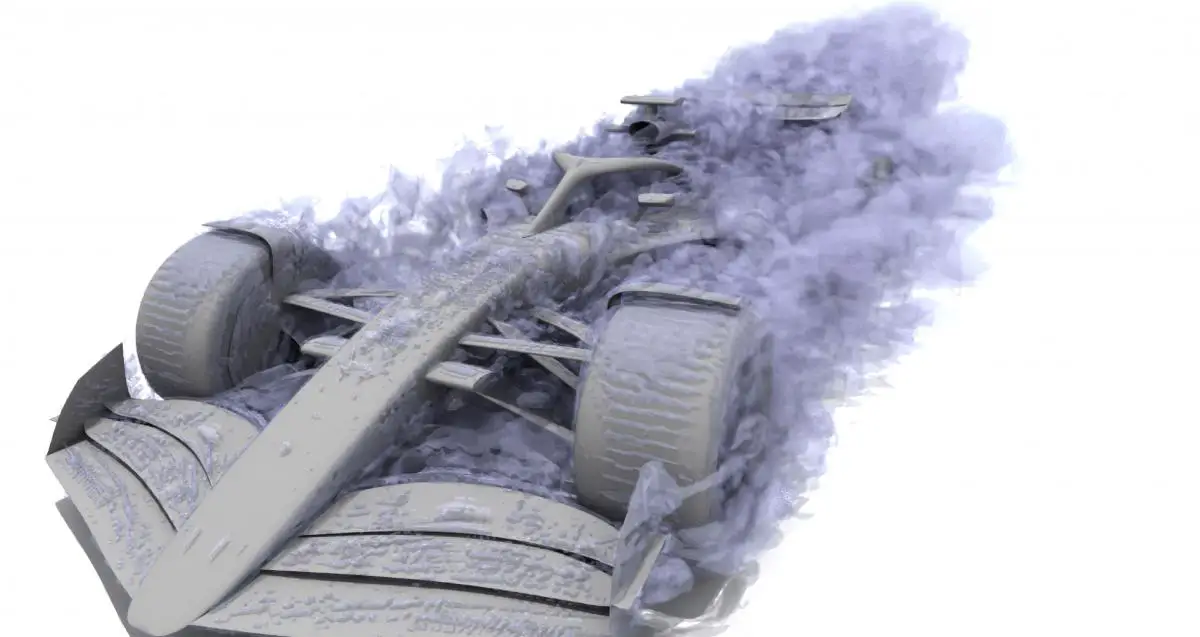Formula One (F1) is a sport that relies heavily on aerodynamics, the science of how air flows around objects. Aerodynamics affects the speed, performance, and handling of the cars, as well as the strategies and tactics of the drivers. One of the most important aspects of aerodynamics in F1 is the slipstream effect. This can give a significant advantage to a driver who knows how to use it.
Slipstream is the name given to the reduced drag effect that an F1 car experiences behind another car. This reduced effect helps the vehicle to attain more speed and overtake the car in front of it.
Drag is the force that opposes the motion of an object through a fluid, such as air. Drag reduces the speed and acceleration of a car, and requires more engine power and fuel consumption to overcome it. F1 cars are designed to minimize drag as much as possible. Thye do this by using sleek aerodynamic shapes and aerodynamic parts that reduce the air resistance.
In this article, we explain how slipstreaming works in F1, how it affects overtaking and racing, and how drivers and teams use it to their advantage or disadvantage. We also look at other F1 terms that relate to the F1 cars aerodynamics – these include the following
- What is F1 Slipstream?
- What Is Clean Air In F1?
- What is F1 Dirty Air?
- What Is An F1 Tow?
- How Does Clean Air Vs Dirty Air Affect F1 Racing?
- F1 Slipstream vs Dirty Air
- F1 Dirty Air vs Tow
- F1 Slipstream vs Tow
- How Did The 2022 F1 Rule Changes Affect Dirty Air?
- What Are The Benefits Of Reducing Dirty Air?
- What Are The Challenges Of Reducing Dirty Air?
- What Is Porpoising?
What is F1 Slipstream?
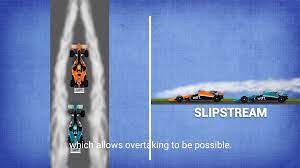
An F1 Slipstream is the name given to the reduced drag effect that an F1 car experiences when it is behind another car in the race. This reduced effect helps the vehicle to attain more speed and overtake the car in front of it.
Drag is the force that opposes the motion of an object through a fluid, such as air. Drag reduces the speed and acceleration of a car, and requires more engine power and fuel consumption to overcome it. F1 cars are designed to minimize drag as much as possible. They do this using sleek shapes and aerodynamic parts that reduce the air resistance.
However, drag cannot be eliminated completely, and it still affects the performance of the cars. When a car drives through the air, it creates a hole in the air behind it. The air pressure is lower than the surrounding air.
This hole is called a wake, and it extends for several meters behind the car.
A wake is not good for the car that creates it, because it means that the car has to work harder to push through the air.
However, a wake can be very beneficial for the car that follows it, because it means that the car has less air resistance to overcome. This is what slipstreaming is: driving in the wake of another car to reduce drag and increase speed.
What Is Clean Air In F1?
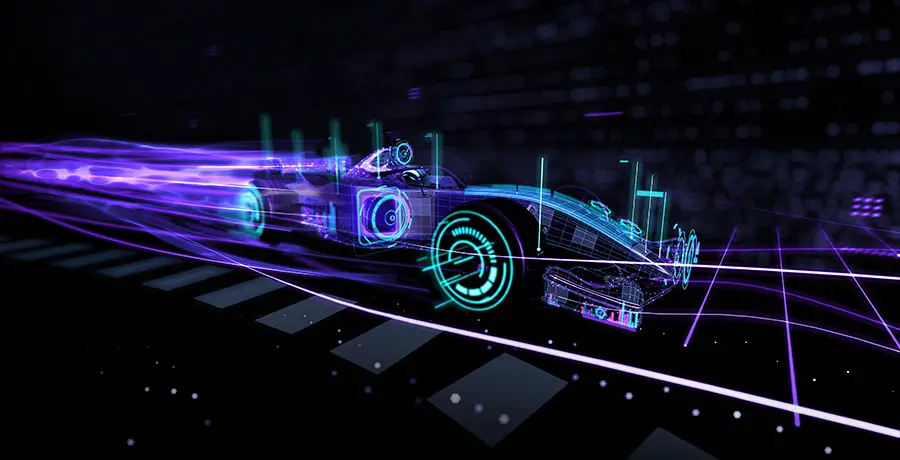
Clean air is the undisturbed and smooth airflow that a car experiences when it is not following another car.
Clean air is very important for an F1 car, as it helps to maximize speed, engine cooling, downforce and grip. This allows the car to go faster through corners and also improves braking performance.
Downforce is the force that pushes a car down onto the track, increasing its traction and stability.
Downforce is generated by the aerodynamic parts of an F1 car, such as the front and rear wings, which create a difference in air pressure above and below them.
The higher pressure below pushes the car down, while the lower pressure above lifts it up.
Grip is the ability of a car to stick to the track surface, preventing it from sliding or spinning. Grip is influenced by several factors, such as tire compound, temperature, pressure, and wear.
However, grip also depends on downforce, as more downforce means more contact between the tires and the track.
In clean air, when a car does not have another one in front of it, it can receive optimal airflow over its aerodynamic parts, which means that it can produce maximum downforce and grip.
This gives the car an advantage in terms of speed and stability.
What is F1 Dirty Air?
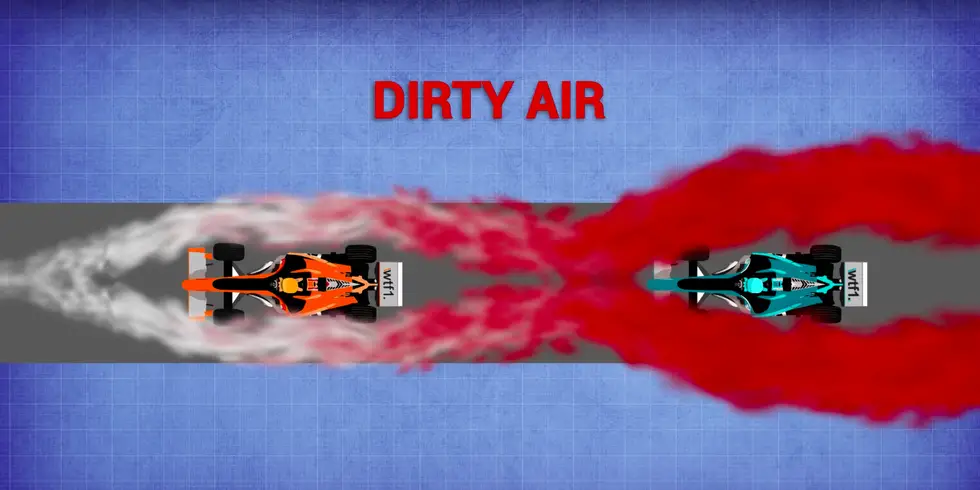
Dirty air is the opposite of slipstream: it is the name given to the turbulent and chaotic air that comes off the back of an F1 car. Dirty air reduces the downforce and grip of the car behind it, making it harder to steer and brake.
Downforce is the force that pushes a car down onto the track, increasing its traction and stability.
Downforce is generated by the aerodynamic parts of an F1 car, such as the front and rear wings, which create a difference in air pressure above and below them. The higher pressure below pushes the car down, while the lower pressure above lifts it up.
However, when a car drives through dirty air, its aerodynamic parts become less effective, because they receive less clean and smooth airflow.
This reduces their ability to create downforce, and makes the car more prone to sliding and losing control. This is especially problematic in corners, where downforce is essential for maintaining speed and balance.
How Does Clean Air Vs Dirty Air Affect F1 Racing?
Clean air vs dirty air affects F1 racing in several ways:
It Affects Overtaking
Overtaking is one of the most exciting aspects of F1 racing, but it can also be very challenging due to dirty air.
When a car tries to overtake another one on a straight, it can benefit from slipstreaming or towing behind it, which reduces drag and increases speed. However, when a car tries to overtake another one on a corner, it can suffer from dirty air, which reduces downforce and grip.
This makes it harder to turn and brake effectively, and increases the risk of losing control or crashing. Therefore, a driver who wants to overtake has to balance these effects carefully, and time their move wisely.
It Affects Qualifying
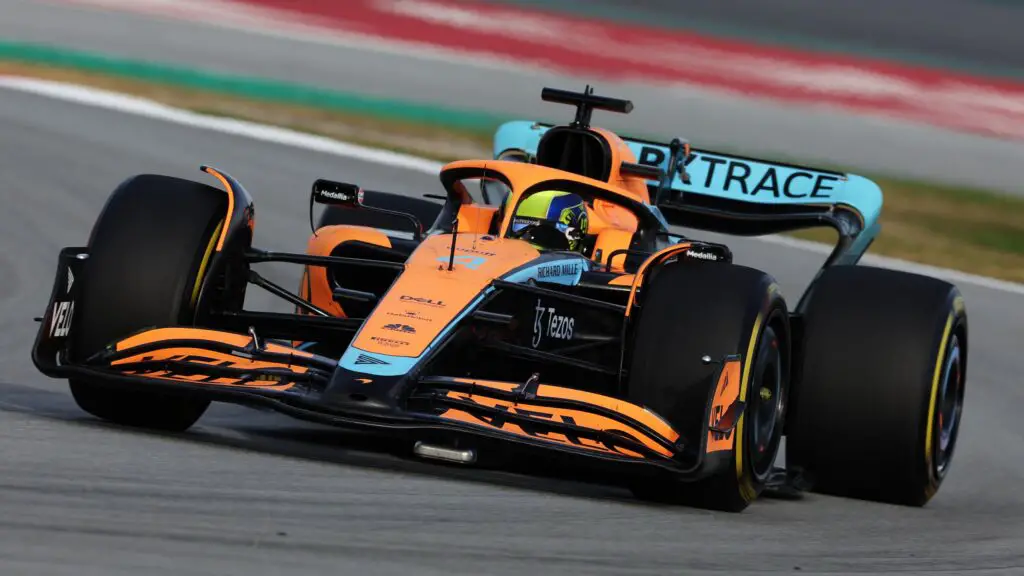
Qualifying is a critically important part of F1 racing. It determines the starting grid positions for the race. In qualifying sessions, drivers try to set their fastest lap times by driving alone on clean air.
However, sometimes drivers may try to get a tow from another car on a straight to gain some extra speed. This can be risky though, as they may also get dirty air on a corner or interfere with other drivers on their flying laps.
It Affects The F1 Team Strategy
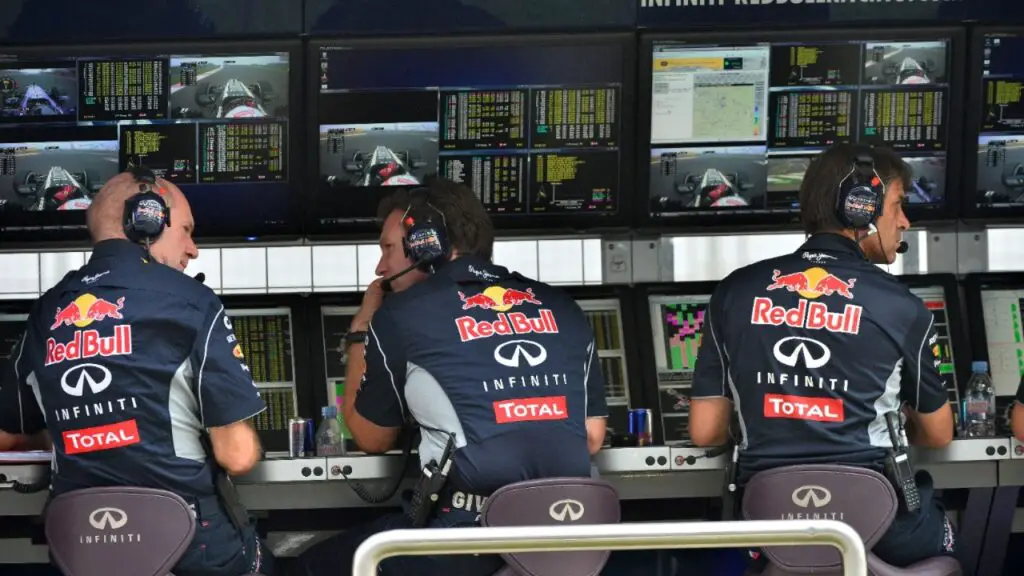
Strategy is fundamental in an F1 race. It involves planning the best way to win the race by considering factors such as tire choice, pit stops, fuel load, weather, and safety cars.
A teams strategy also depends on clean air vs dirty air. Drivers and teams have to decide
- When and where to overtake.
- When and how to get a tow.
- When and how to avoid dirty air.
- How to use their car’s aerodynamic strengths and weaknesses.
F1 Slipstream vs Dirty Air
F1 Slipstream and dirty air are two sides of the same coin: they are both effects of aerodynamics that can help or hinder a driver depending on where they occur on the track. The key difference lies in whether they occur on a straight or a corner.
On a straight, slipstreaming is advantageous for the following car, because it reduces drag and increases speed. On a corner, dirty air is disadvantageous for the following car, because it reduces downforce and grip.
Therefore, a driver who wants to overtake another car has to balance these two effects carefully. They have to get close enough to benefit from slipstreaming on a straight, but not too close to suffer from dirty air on a corner.
They also have to time their move wisely, so that they can pass their opponent before they reach another corner where they might lose their advantage.
What Is An F1 Tow?
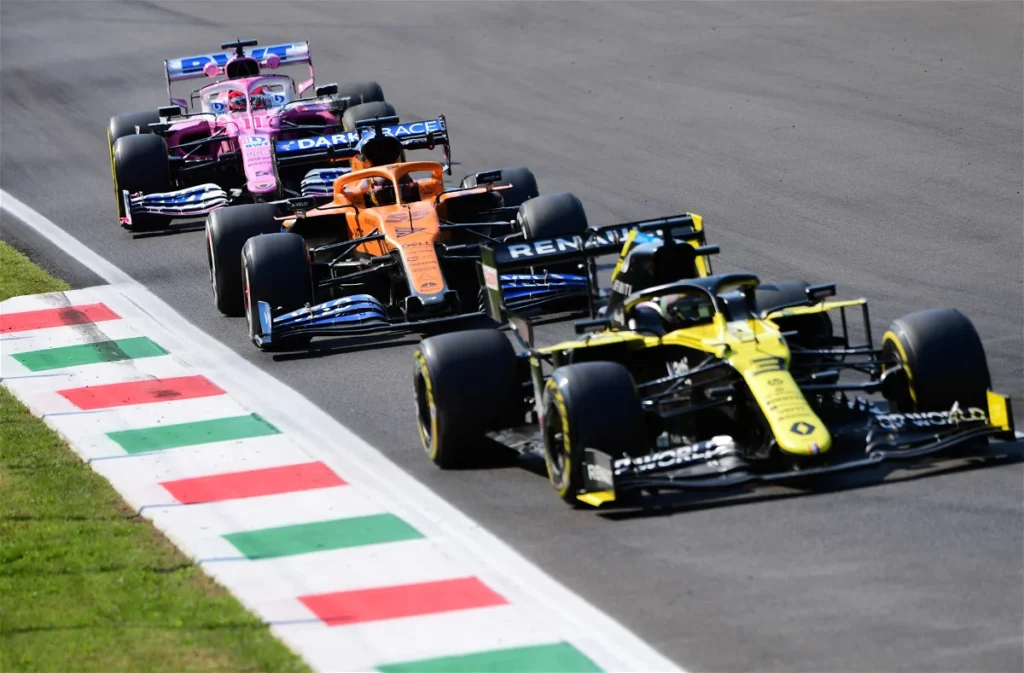
A tow is another term for slipstreaming: it refers to when a car follows another closely behind on a straight to gain speed and overtake. The term comes from the idea that the leading car pulls or drags the following car along with it.
A tow can be very useful for qualifying sessions, where drivers try to set their fastest lap times. By getting a tow from another car on a straight, a driver can improve their lap time significantly.
Getting a tow also depends on luck and timing: a driver has to find another car that is going at a similar pace and distance ahead of them.
Some drivers may try to cooperate with their teammates or other drivers to get a tow during qualifying. They may agree to work together. They do this by taking turns giving each other a tow.
One of the ways they do this is to synchronize their laps. They will plan to catch each other on the straights.
F1 Dirty Air vs Tow
Dirty air and tow are two opposite effects of aerodynamics that can affect a driver’s performance on a straight. The turbulent air reduces the speed and acceleration of the car behind, while tow increases it.
Dirty air occurs when a car is too close to another car in front of it, and receives turbulent and chaotic airflow from its wake. This reduces the effectiveness of its aerodynamic parts, and makes it harder to overcome the drag.
Dirty air can also affect the cooling and braking systems of the car, which rely on clean and smooth airflow.
Tow occurs when a car is close enough to another car in front of it, but not too close, and receives reduced drag from its wake. This increases the speed and acceleration of the car, and makes it easier to overtake.
A tow can also help to save fuel, as the car does not have to work as hard to maintain its speed.
F1 Slipstream vs Tow
Slipstream and tow are two different terms for the same effect. The reduced drag that a car experiences when it follows another car closely behind on a straight.
Slipstream is a more general term that can apply to any vehicle or object that moves through a fluid, such as air or water. Tow is a more specific term that applies to motorsports, especially F1.
Slipstreaming is a common phenomenon in many sports and activities, such as
- Cycling
- Running
- Swimming
- Sailing
- Flying.
It can give a significant advantage to those who use it wisely, but it can also create challenges and risks for those who face it. Slipstreaming requires skill, strategy, and timing to master.
Towing is a common tactic in F1, especially during qualifying sessions. It can give a significant boost to a driver’s lap time, but it can also depend on luck and cooperation.
Towing requires coordination, communication, and trust to execute.
How Did The 2022 F1 Rule Changes Affect Dirty Air?
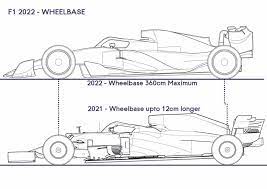
The 2022 F1 season saw some of the biggest rule changes in the history of the sport. The aerodynamic shape of the cars changed in order to reduce the amount of dirty air in the wake of the cars.
The aim was to make following closely and overtaking easier and so improve the quality of racing.
The new F1 car features a simpler front wing and a rear wing designed to push the aerodynamic wake up and over the car following behind. This reduces the amount of dirty air that reaches the following car, and allows it to maintain more downforce and grip.
The new F1 car also features deep underfloor tunnels that produce downforce through a ground effect. Ground effect is when a car uses its shape to create low pressure underneath it, which sucks it to the ground.
Ground effect is impacted less by dirty air than wing-generated downforce, because it relies on smooth airflow underneath rather than above.
The new F1 car also has smaller bargeboards (pieces of bodywork placed vertically for better aerodynamics) and wheel covers that control airflow around the wheels. These changes reduce the complexity and turbulence of the airflow around the car, and make it more predictable and consistent.
The new 18-inch wheels with low-profile tires also have an impact on aerodynamics. The larger wheels reduce tire deformation and drag, while the lower tire sidewalls reduce tire squirt (air being pushed out from between tire and wheel).
These effects reduce turbulence and improve airflow quality.
What Are The Benefits Of Reducing Dirty Air?
Reducing dirty air has several benefits for F1 racing:
- It makes overtaking easier and more frequent, as cars can follow each other more closely without losing downforce and grip.
- It makes racing more exciting and unpredictable, as drivers can challenge each other more often and use different strategies. This it makes F1 more exciting for spectators and TV audiences.
- It makes racing more fair and competitive, as drivers can rely more on their skills and less on their car’s aerodynamic advantage.
- It makes racing more sustainable and efficient, as cars can save fuel and engine power by slipstreaming behind other cars.
What Are The Challenges Of Reducing Dirty Air?
Reducing dirty air also has some challenges for F1 racing:
- It requires a lot of research and development to design cars that produce less dirty air without compromising performance or safety.
- It requires a lot of testing and simulation to ensure that cars behave as expected under different conditions and scenarios.
- It requires a lot of cooperation and communication between teams, drivers, and regulators to agree on the rules and regulations that govern the sport.
- It requires a lot of adaptation and learning from drivers and engineers to adjust to the new cars and their characteristics.
Some teams (Mercedes F1 being an example) were caught out by the new rules and the technology requirements. They were previously a winning team, but in 2022 there were some races where Lewis Hamilton did not even get into Q3 qualifying sessions.
On the other hand Red Bull made no mistakes and they dominated 2022 winning the drivers championship (Max Verstappen) and the constructors trophy.
What Is Porpoising?
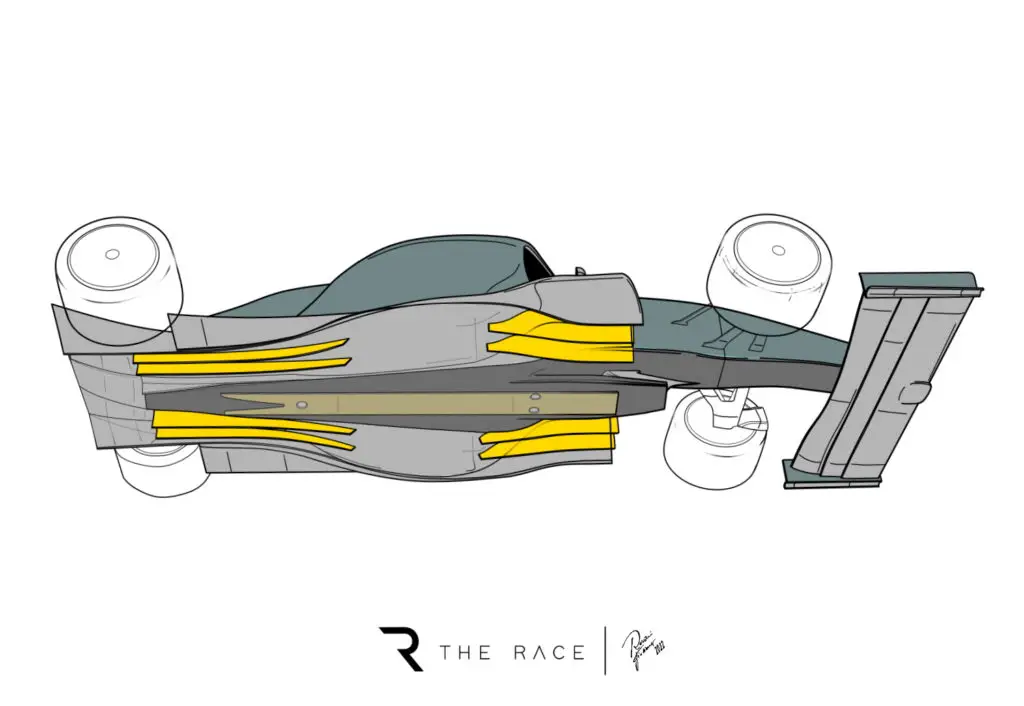
Teams that got the ground effect design wrong suffered severely from porpoising.
The ground effect comes into play when the car speeds up sufficiently so that the floor’s aerodynamic design creates a vacuum comes into effect.
As the car’s speed continues to increase or the road surface has bumps, the ground effect system suffers an “aerodynamic stall” (similar to when the angle of attack on an aircraft wing prevents it from creating lift.)
The result is that the suction disappears, and the car “bounces” up. The cycle repeats.
One of the consequences of the new “Ground Effect” cars is that the suction is affected by many different factors. These include.
- Bumps in the road
- The height of the car floor over the surface
- The speed of the car.
At best Mercedes where the 3rd fastest F1 team in 2022.
Conclusion
F1 slipstream is the reduced drag effect that an F1 car experiences when it follows another car closely behind on a straight. It helps the car to increase its speed and overtake the car in front of it. However, slipstreaming also comes with challenges and risks, such as dirty air, which reduces the downforce and grip of the car behind on corners. A driver who wants to use slipstreaming effectively has to balance these effects carefully, and time their move wisely. Slipstreaming is also known as towing in F1, especially during qualifying sessions.
For more articles like this have a look at our web site f1worldwide.com.
Some articles you may find interesting include.

